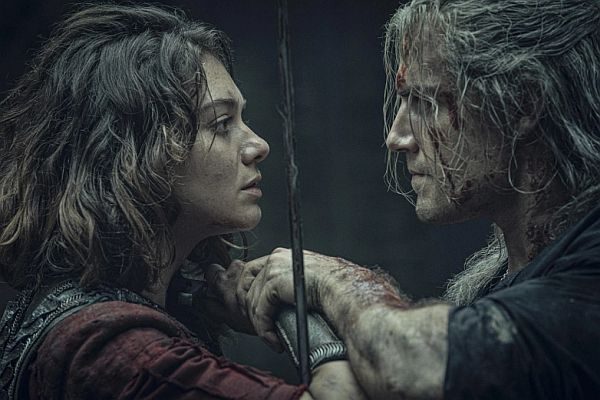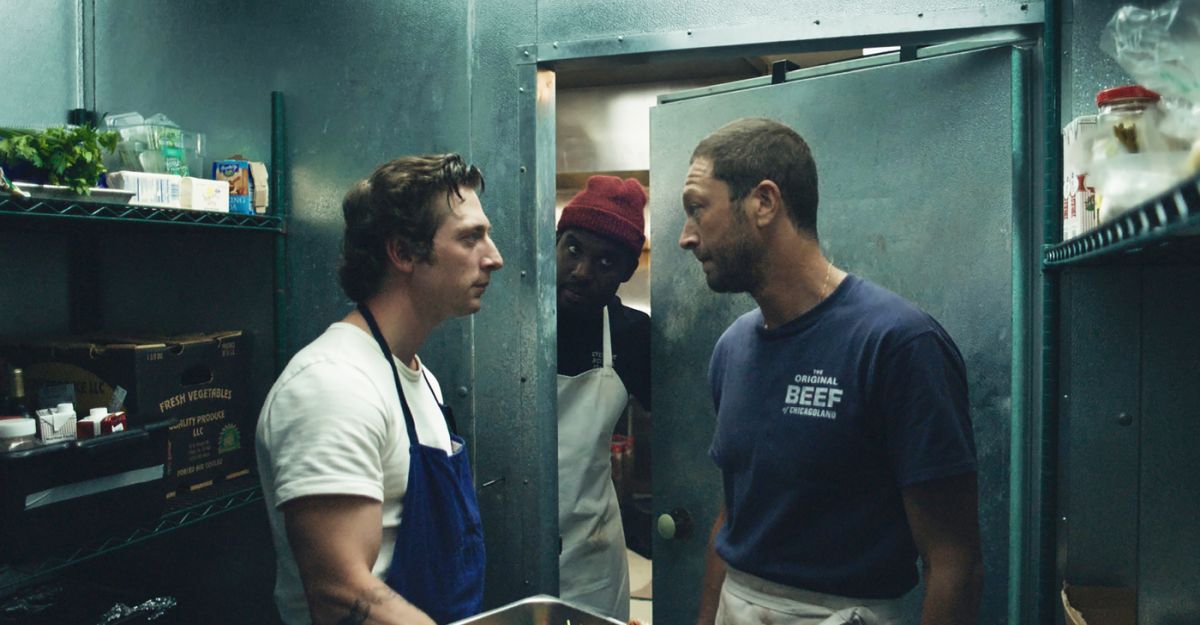The discussion of the Netflix fantasy series The Witcher has largely revolved around comparisons with HBO’s Game of Thrones, leading reviewers to speculate about the show’s potential to fill the void left by the most successful fantasy series in the history of television.
While most critics have concluded that the significant stylistic, narrative and thematic differences between the shows cannot warrant a systematic comparison, fewer have attempted to examine the different positions they occupy within the fantasy genre. While GoT is usually defined as epic fantasy, a subgenre characterised by the epic tone and stakes of the story, The Witcher could be considered an example of sword and sorcery.
The origins of sword and sorcery can be traced back to literary modes and genres such as the mythological tale, the epic poem, the historical novel and the pulp short story. Although sword and sorcery as a distinct subgenre emerged in the 1930s with the work of RE Howard, creator of anti-hero Conan the Barbarian, the term was coined in 1961 by Fritz Leiber in response to an open letter by fellow author Michael Moorcock. Moorcock had asked for a label for the kind of fantasy adventures Howard wrote. Leiber wrote:
I feel more certain than ever that this field should be called the sword-and-sorcery story. This accurately describes the points of culture-level and supernatural element and also immediately distinguishes it from the cloak-and-sword (historical adventure) story – and (quite incidentally) from the cloak-and-dagger (international espionage) story too!
There have been several further attempts to refine the definition of sword and sorcery. Despite some disagreements about the finer points, the label is often associated with fast-paced, action-rich tales featuring heroes in violent conflict with wizards, evil spirits and other supernatural creatures. The protagonists are often strangers or outcasts who live in imaginary lands and need to overcome fantastic dangers to earn riches, the love of members of the opposite sex or the chance to live another day. Unlike works of high fantasy such as JRR Tolkien’s The Lord of the Rings, which are marked by deep moral concerns and focused on world-threatening issues, the stakes in sword and sorcery tales are usually more personal and the protagonists morally compromised.
In cinema, elements of sword and sorcery sensibilities can be found in early European auteur film (for example, Fritz Lang’s mythological epic Die Niebelung, 1924), Hollywood swashbuckling cinema (The Thief of Bagdad, 1924) and transnational genres such as the peplum and the historical epic.
The golden age of sword and sorcery as a distinct film subgenre, however, was confined to a specific historical period: the 1980s. The boom was triggered at the beginning of the decade by the commercial success of Excalibur (1981) in the UK and Conan the Barbarian (1982) in the US.
Many American and international film-makers attempted to capitalise on the popularity of Conan in particular, producing movies that attempted to emulate both the tone and the hero of the film. The long flurry of films inspired by Conan include The Beastmaster (1982), The Sword and the Sorcerer (1982), Deathstalker (1983), Fire and Ice (1983) and Red Sonja (1985). The Italian film industry, which in the 1960s and 1970s specialised in low-budget films attempting to imitate American genre movies, was responsible for the release, in quick succession, of dozens of Conan-clones, including Ator: The Fighting Eagle (1982), Conquest (1983), Ator 2 (1984) and Barbarians (1987).
Sword and sorcery films of the 1980s often earned the scorn of critics both of because their alleged lack of artistic merits and their exploitative content. The limited budgets as well as the rate at which they were churned out meant production values were usually low. The commercial success of these films relied on the exploitation of the basest and most visceral viewers’ desires, particularly through the depiction of graphic violence, nudity and sex.
Critics’ scepticism, however, was also due to the perceived conservatism of these movies in terms of their representation of race and masculinity. Douglas Kellner, for example, claimed the hypermasculinity of the barbarian protagonists of sword and sorcery films such as Conan could be interpreted as a direct reflection of the conservative ideals of aggressive and hyper-individualistic masculinity espoused by Reagan’s administration.
Some critics considered the representation of violence in sword and sorcery films an expression of racist tendencies. In his review of Conan, Roger Ebert was disturbed by the depiction of a ‘Nordic superman confronting a black’ in which the ‘muscular blond’ slices off the black man’s head and ‘contemptuously [throws it] down the flight of stairs’. The narrative pattern in which a muscular white hero confronts a ‘monstrous other’ (either a woman or another character marked as either racially or physically different) reoccurs in most sword and sorcery films of the decade.
Finally, the widespread popularity of these films elicited concerns about their escapist nature. Their commercial success corresponded to the emergence of fantasy table-top role-playing games such as Dungeons & Dragons, whose popularity led to a moral panic as some Christian groups criticised the game’s promotion of such practices as devil worship, witchcraft, murder and female nudity. People also claimed that role-playing games affected the players’ ability to separate fantasy from reality, leading to psychotic episodes (the most notable case concerning James Dallas Egbert III, whose story was fictionalised in the novel Mazes and Monsters and later in a TV movie of the same title).
The negative critical appraisal of the genre, coupled with the commercial failure of a number of Conan clones in the late 1980s, led to a gradual decline of sword and sorcery films and TV series. During the 1990s and 2000s, this decline was only occasionally interrupted by the success of shows such as Hercules: The Legendary Journeys (1995–1999) and Xena: Warrior Princess (1995–2001), as well as movie franchises such as The Scorpion King (2002–2018). The decline is all the more surprising considering that during this period technological innovations in digital technology and CGI (which in turn facilitated the creation of fantastical creatures and universes) led to a boom of other fantasy subgenres.
Now the popular success of The Witcher has demonstrated that sword and sorcery is still alive.
Set in a fictional universe called The Continent, the show follows the converging adventures of three main characters: Ciri, a young princess forced to leave behind her royal life; Yennefer, a beautiful sorceress with great ambitions; and Geralt of Rivia, the titular ‘witcher’ who hunts monsters for coin. The show is based on a series of novels by Polish writer Andrzej Sapkowski, which had already spawned film (The Hexer, 2001) and TV adaptations (The Hexer, 2002), a graphic novel series and three successful videogames (The Witcher, The Witcher 2: Assassins of Kings and The Witcher 3: Wild Hunt).
Although the universe created by Sapkowski draws upon elements of Tolkien’s high fantasy (in particular the idea of a world inhabited by different races such as humans, elves, dwarves and dragons), The Witcher is strongly anchored to the sword and sorcery tradition. The witcher’s muscular persona as well as his sword-fighting abilities and outsider’s status are reminiscent of Conan the Barbarian. But Geralt is also indebted to other iconic sword and sorcery heroes such as Michael Moorcock’s Elric of Melniboné, shares with the witcher a long white mane, the ‘white wolf’ moniker and a penchant for performance-enhancing potions.
Like Xena before it, The Witcher has shown sword and sorcery’s ability to adapt to changing audiences’ taste and expectations by expunging some of the genre’s most problematic characteristics, such as celebration of an omnipotent hypermasculinity. In the Netflix show, for example, the emphasis on Geralt’s sword-fighting prowess is balanced by the exploration of female characters such as Yennefer and Ciri.
In The Witcher, the entertainment value of the fighting scenes, magic spells and tongue-in-cheek campiness does not depend on the assertion of regressive ideological constructs characteristic of 1980s sword and sorcery. One of the show’s biggest merits has been its ability to rediscover the commercial, artistic and narrative potential of what, for a long time, has been a reviled subgenre, thus opening new imaginative horizons for both media producers and global audiences.






